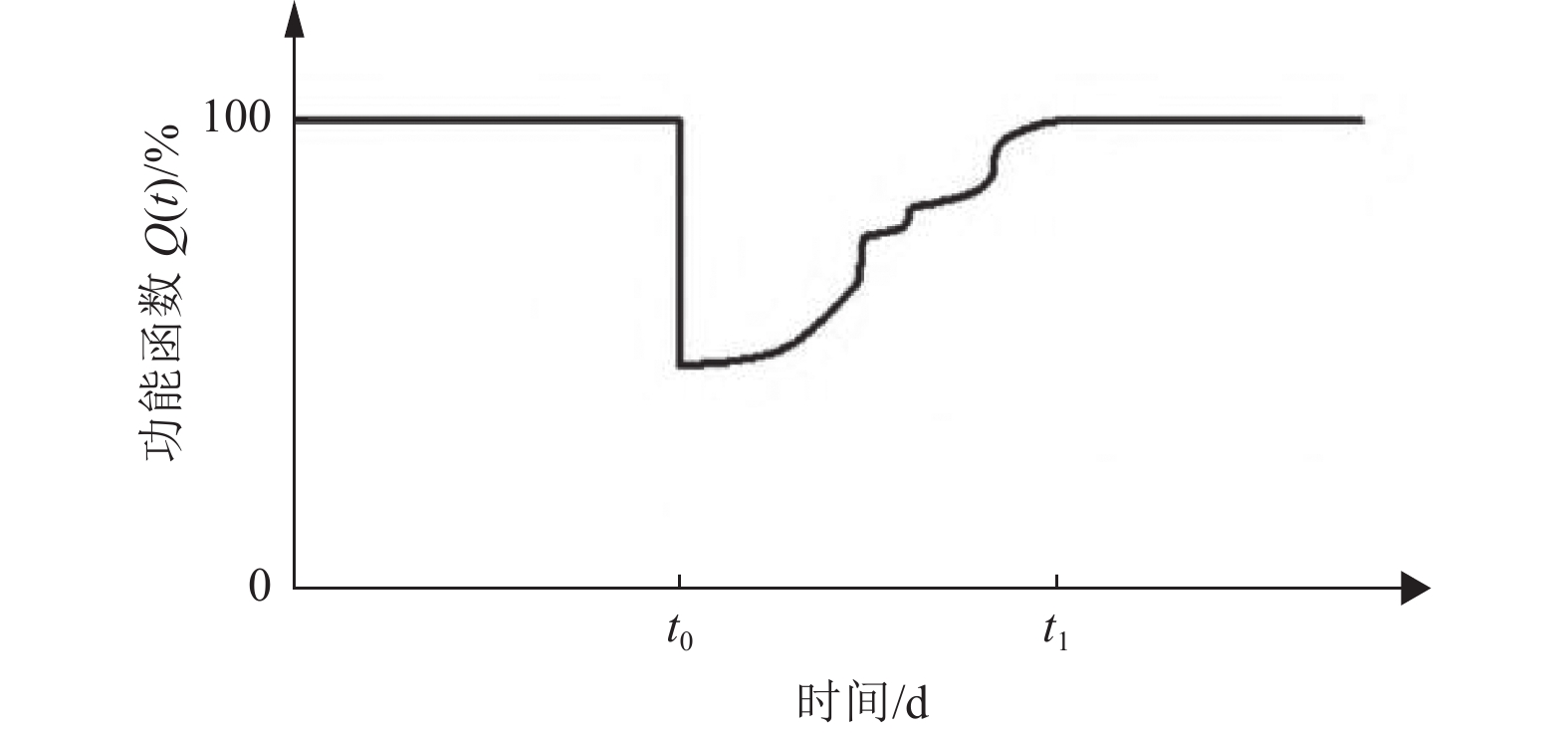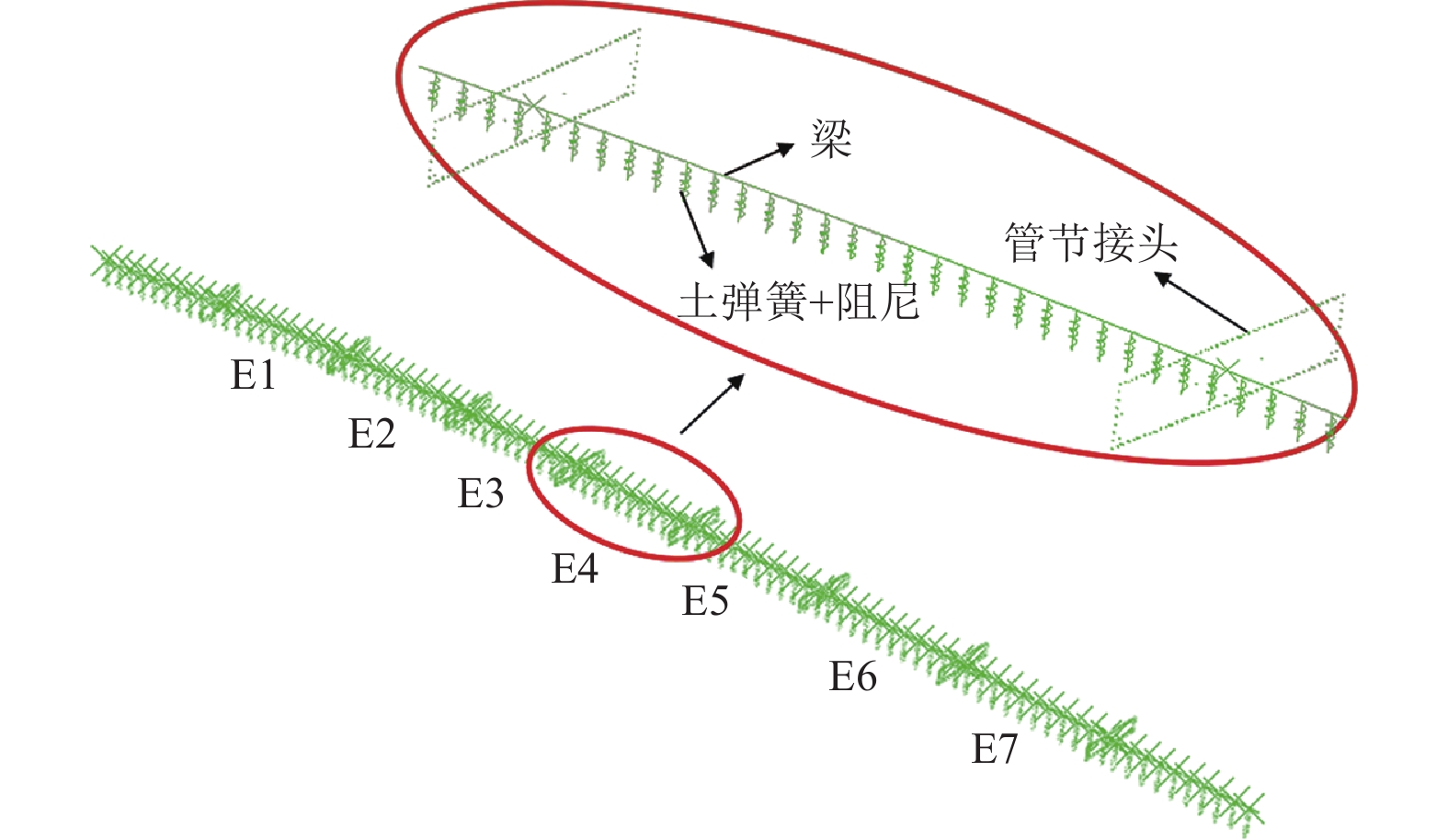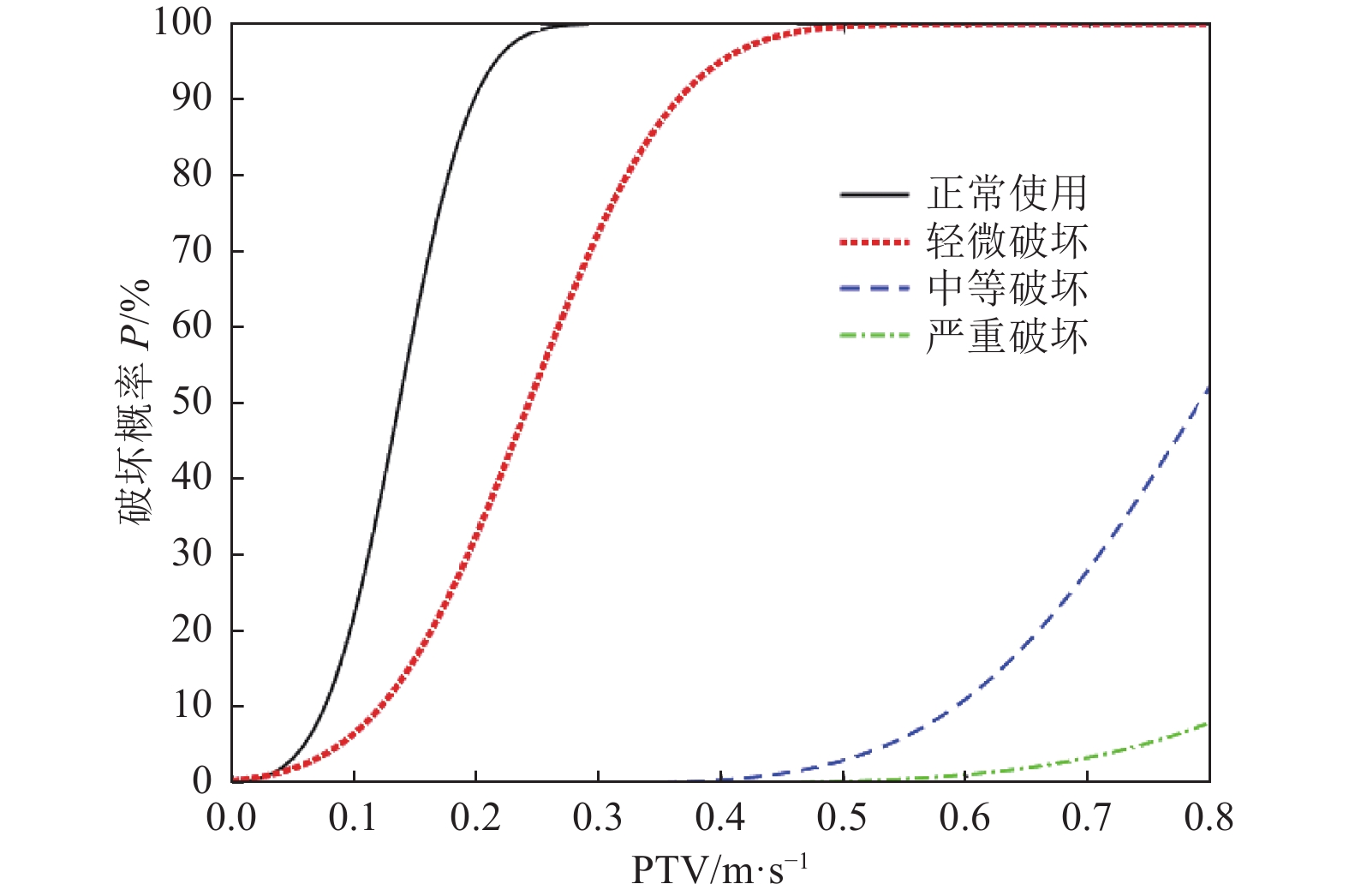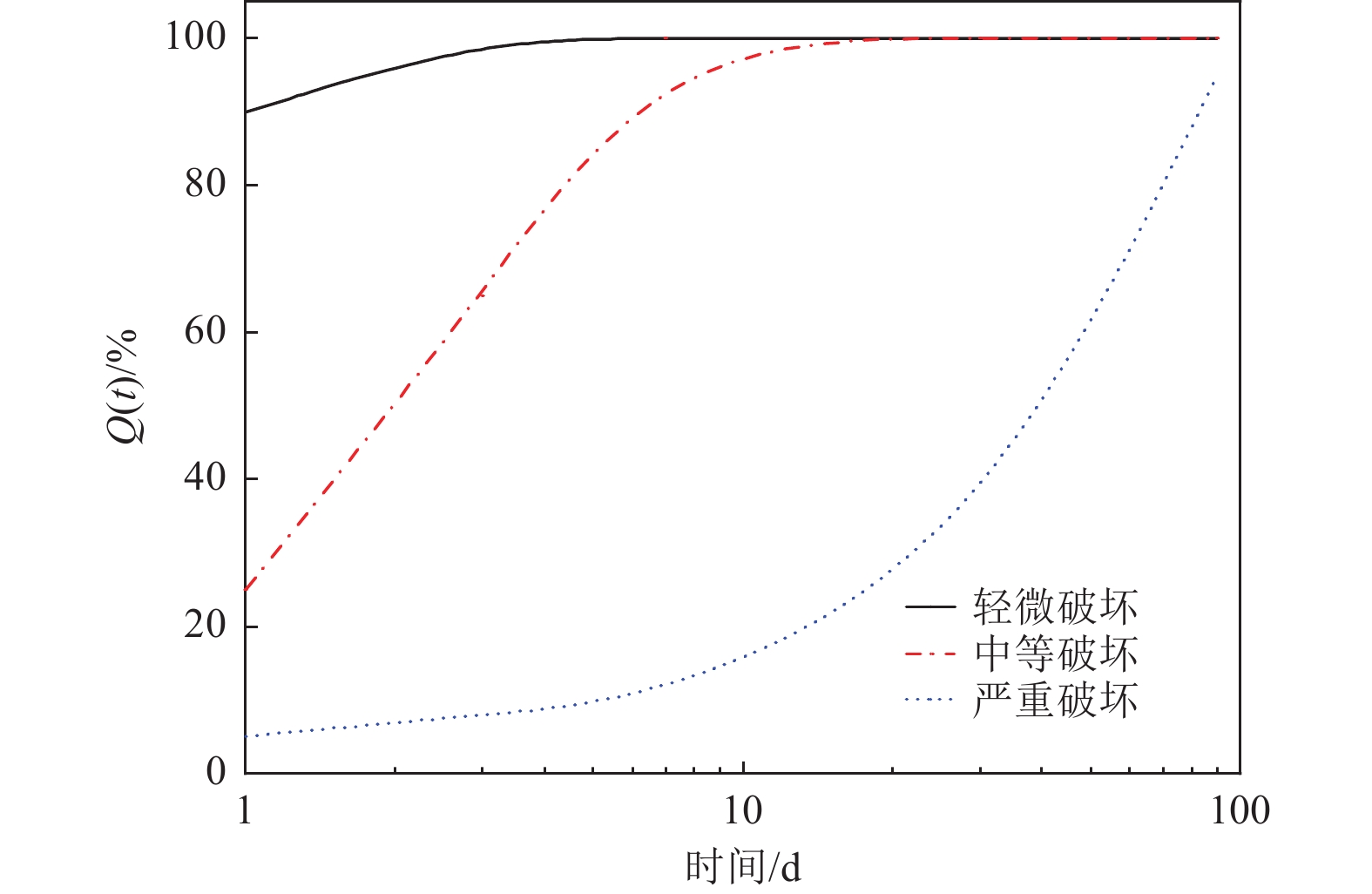Seismic Resilience Assessment for Longitudinal Response of Immersed Tunnels
-
摘要: 抗震韧性是评估结构抗震性能的重要手段,但目前对沉管隧道纵向抗震韧性评价的研究较缺乏。基于梁-弹簧模型建立能够合理考虑沉管隧道结构特征及接头构造的沉管隧道多尺度分析模型,选择合理的评估指标,根据不同极限状态定义获得地震易损性曲线,通过构建合理的性能恢复函数计算隧道韧性指数,从而建立沉管隧道抗震韧性评估方法,并以某沉管隧道实际工程为例进行隧道抗震韧性分析,揭示地震动强度及地层-结构相对刚度比等关键参数的影响规律。研究结果表明,随着PGA的增加,隧道震后剩余功能函数显著下降,隧道抗震韧性明显降低;隧道韧性指数随着地层-结构相对刚度比的增大而增大。Abstract: Seismic resilience assessment is an important means to evaluate the seismic performance of structures, but the seismic resilience assessment for longitudinal response of immersed tunnels has not been reported yet. Based on the beam-spring model, a multi-scale analysis model of immersed tunnel was established, which took the characteristics and joints of immersed tunnels into consideration. Fragility curves were developed at different limit states with reasonable intensity measure and damage measure. The seismic resilience assessment framework were modeled by the estimation of restoration functions and the resilience index. Taking an immersed tunnel as an application example, parametric analyses were performed to investigate the influence of the peak ground acceleration and soil-structure relative stiffness ratio. The results show that the residual functionality and seismic resilience decrease significantly with the increase of the PGA. The seismic resilience index increase with increasing soil-structure relative stiffness ratio.
-
图 2 抗震韧性评价方法模型(Bruneau,2007)
Figure 2. Assessing model of seismic resilience (Bruneau, 2007)
图 5 隧道性能恢复函数(FEMA,2020)
Figure 5. Tunnel restoration curves (FEMA, 2020)
表 1 损伤状态定义
Table 1. Definitions of Each Damage State
损伤状态 损伤指标范围 正常使用 管节接头相对张合量≤2 cm,最大错台量≤0.5 cm,M/MRd≤1 轻微破坏 管节接头相对张合量≤4 cm,最大错台量≤1 cm,M/MRd≤1.5 中等破坏 M/MRd≤2.5 严重破坏 M/MRd≤3.5 表 2 韧性等级划分(Huang等,2022)
Table 2. Definitions of resilience grade(Huang et al., 2022)
韧性等级 韧性指数R范围 高 0.9≤R<1 中 0.6≤R<0.9 低 R<0.6 -
路德春, 马超, 杜修力等, 2022. 城市地下结构抗震韧性研究进展. 中国科学: 技术科学, 52(10): 1469—1483 doi: 10.1360/SST-2021-0013Lu D. C. , Ma C. , Du X. L. , et al. , 2022. Earthquake resilience of urban underground structures: state of the art. Scientia Sinica Technologica, 52(10): 1469—1483. (in Chinese) doi: 10.1360/SST-2021-0013 邱大鹏, 2019. 大跨度地下框架结构地震响应与减震控制措施. 大连: 大连理工大学.Qiu D. P., 2019. Seismic responses and control measures of underground large scale frame structures. Dalian: Dalian University of Technology. (in Chinese) 王涛, 2021. 建筑抗震韧性评价研究进展. 城市与减灾, (4): 33—38. 禹海涛, 吴胤翔, 涂新斌等, 2020. 盾构隧道纵向地震响应的多尺度分析方法. 中国公路学报, 33(1): 138—144, 152 doi: 10.19721/j.cnki.1001-7372.2020.01.014Yu H. T. , Wu Y. X. , Tu X. B. , et al. , 2020. Multi-scale method for longitudinal seismic response analysis of shield tunnels. China Journal of Highway and Transport, 33(1): 138—144, 152. (in Chinese) doi: 10.19721/j.cnki.1001-7372.2020.01.014 禹海涛, 宋毅, 李亚东等, 2021. 沉管隧道多尺度方法与地震响应分析. 同济大学学报(自然科学版), 49(6): 807—815Yu H. T. , Song Y. , Li Y. D. , et al. , 2021. Multi-scale method and seismic response analysis of immersed tunnel. Journal of Tongji University (Natural Science), 49(6): 807—815. (in Chinese) 禹海涛, 李心熙, 袁勇等, 2022. 沉管隧道纵向地震易损性分析方法. 中国公路学报, 35(10): 13—22Yu H. T. , Li X. X. , Yuan Y. , et al. , 2022. Seismic vulnerability analysis method for longitudinal response of immersed tunnels. China Journal of Highway and Transport, 35(10): 13—22. (in Chinese) 袁万城, 王思杰, 李怀峰等, 2021. 桥梁抗震智能与韧性的发展. 中国公路学报, 34(2): 98—117 doi: 10.19721/j.cnki.1001-7372.2021.02.002Yuan W. C. , Wang S. J. , Li H. F. , et al. , 2021. Development of intelligence and resilience for bridge seismic design. China Journal of Highway and Transport, 34(2): 98—117. (in Chinese) doi: 10.19721/j.cnki.1001-7372.2021.02.002 中华人民共和国交通运输部, 2020. JTG 2232—2019 公路隧道抗震设计规范. 北京: 人民交通出版社.Ministry of Transport of the People’s Republic of China, 2020. JTG 2232—2019 Specifications for seismic design of highway tunnels. Beijing: China Communications Press. (in Chinese) 庄海洋, 付继赛, 朱明轩等, 2019. 柱顶设置滑移支座时地铁地下车站结构抗震性能分析. 隧道与地下工程灾害防治, 1(3): 57—67Zhuang H. Y. , Fu J. S. , Zhu M. X. , et al. , 2019. Seismic performance of underground subway station with elastic slipping bearing fixed on the top of columns. Hazard Control in Tunnelling and Underground Engineering, 1(3): 57—67. (in Chinese) Alipour A. , Shafei B. , 2016. Seismic resilience of transportation networks with deteriorating components. Journal of Structural Engineering, 142(8): C4015015. doi: 10.1061/(ASCE)ST.1943-541X.0001399 Anwar G. A. , Dong Y. , Zhai C. H. , 2020. Performance-based probabilistic framework for seismic risk, resilience, and sustainability assessment of reinforced concrete structures. Advances in Structural Engineering, 23(7): 1454—1472. doi: 10.1177/1369433219895363 Argyroudis S. A. , Pitilakis K. D. , 2012. Seismic fragility curves of shallow tunnels in alluvial deposits. Soil Dynamics and Earthquake Engineering, 35: 1—12. doi: 10.1016/j.soildyn.2011.11.004 Bocchini P. , Frangopol D. M. , 2012. Optimal resilience- and cost-based postdisaster intervention prioritization for bridges along a highway segment. Journal of Bridge Engineering, 17(1): 117—129. doi: 10.1061/(ASCE)BE.1943-5592.0000201 Bruneau M. , Chang S. E. , Eguchi R. T. , et al. , 2003. A framework to quantitatively assess and enhance the seismic resilience of communities. Earthquake Spectra, 19(4): 733—752. doi: 10.1193/1.1623497 Bruneau M. , Reinhorn A. , 2007. Exploring the concept of seismic resilience for acute care facilities. Earthquake Spectra, 23(1): 41—62. doi: 10.1193/1.2431396 Chen Z. Y. , Zhou Y. , 2019. Seismic performance of framed underground structures with self-centering energy-dissipation column base. Advances in Structural Engineering, 22(13): 2809—2822. doi: 10.1177/1369433219852043 Cimellaro G. P. , Reinhorn A. M. , Bruneau M. , 2010. Framework for analytical quantification of disaster resilience. Engineering Structures, 32(11): 3639—3649. doi: 10.1016/j.engstruct.2010.08.008 Dong Y. , Frangopol D. M. , 2015. Risk and resilience assessment of bridges under mainshock and aftershocks incorporating uncertainties. Engineering Structures, 83: 198—208. doi: 10.1016/j.engstruct.2014.10.050 FEMA, 2020. Hazus earthquake model technical manual, Hazus 4.2 SP3. (2020-10)[2022-10-31]. https://www.fema.gov/flood-maps/tools-resources/flood-map-products/hazus/user-technical-manuals Huang Z. K. , Zhang D. M. , Pitilakis K. , et al. , 2022. Resilience assessment of tunnels: framework and application for tunnels in alluvial deposits exposed to seismic hazard. Soil Dynamics and Earthquake Engineering, 162: 107456. doi: 10.1016/j.soildyn.2022.107456 Liu T. , Chen Z. Y. , Yuan Y. , et al. , 2017. Fragility analysis of a subway station structure by incremental dynamic analysis. Advances in Structural Engineering, 20(7): 1111—1124. doi: 10.1177/1369433216671319 Ma C. , Lu D. C. , Du X. L. , 2018. Seismic performance upgrading for underground structures by introducing sliding isolation bearings. Tunnelling and Underground Space Technology, 74: 1—9. doi: 10.1016/j.tust.2018.01.007 St John C. M. , Zahrah T. F. , 1987. Aseismic design of underground structures. Tunnelling and Underground Space Technology, 2(2): 165—197. doi: 10.1016/0886-7798(87)90011-3 Wang J. N., 1993. Seismic design of tunnels: a state-of-the-art approach. New York: Parsons Brinckerhoff Quade & Douglas. -



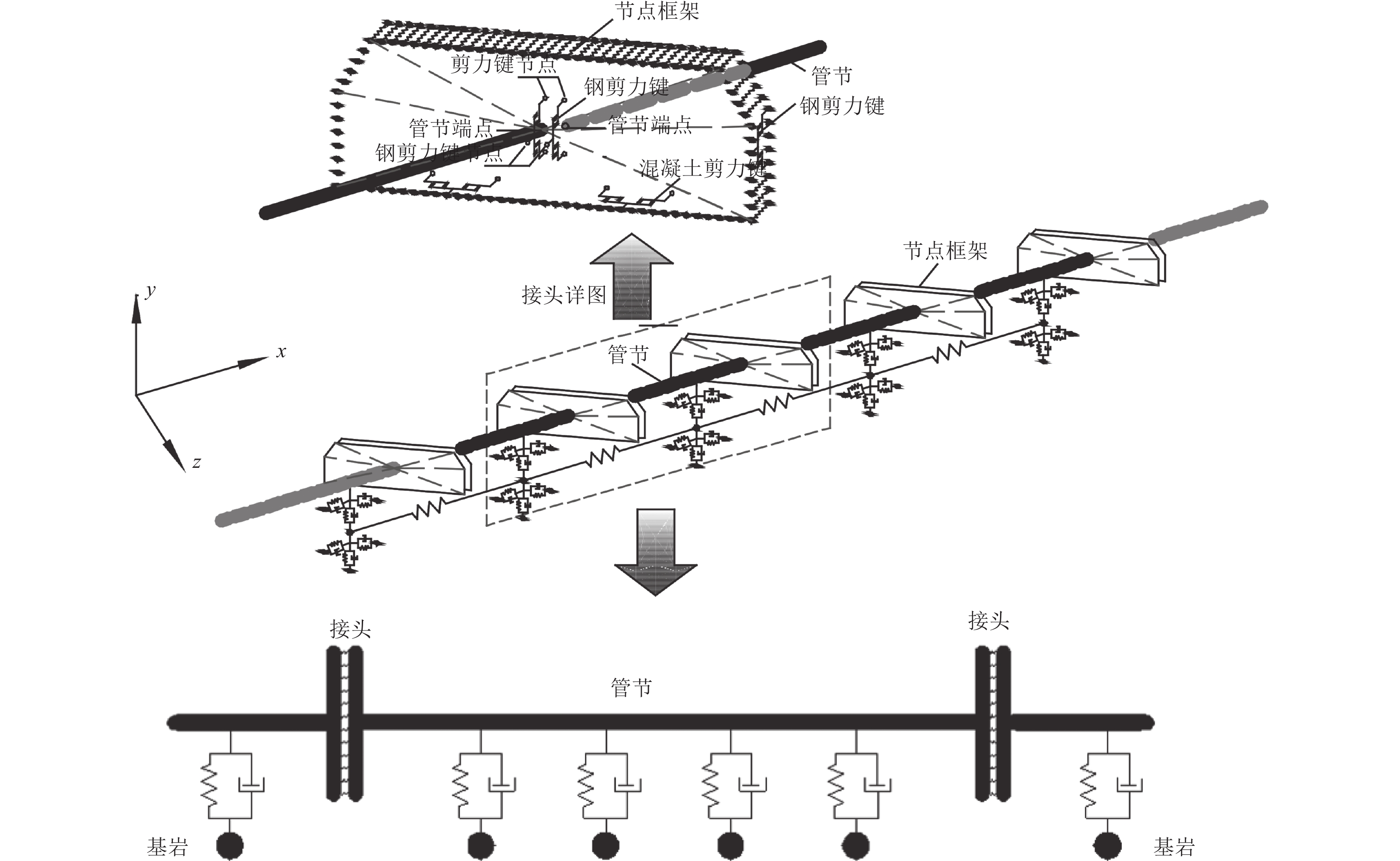
 下载:
下载:
